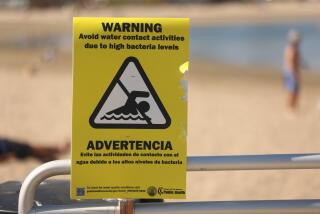Child-Proofing the Swimming Pool
- Share via
Swimming pools are a big part of the leisurely life in Southern California. On a typically sunny day, the water is always inviting--too inviting, in fact, for unsupervised children. Drowning is the No. 1 killer of children ages 4 and younger in this pool-studded region. These tragedies are preventable.
Often, it happens in minutes. A diligent father switches his attention to the phone; his child sinks lifelessly to the bottom of the swimming pool. A normally attentive mother is cooking in the kitchen; her youngster falls into a neighbor’s pool. A conscientious baby-sitter is distracted by the needs of one of her many charges; another wanders off and drowns.
Constant and close adult supervision is the best way to prevent youngsters from drowning. But there are also steps that can make it more difficult for a child to get into a pool.
Los Angeles City Councilwoman Joy Picus has proposed tougher regulations to prevent pool accidents. The regulations, under consideration by the city’s Building and Safety Commission, would require alarms on doors leading to the pool area and fences that are more difficult to scale. The commission should also consider fences on all four sides of pools and motorized covers that protect against unsupervised swimming, reduce evaporation and cut chemical use.
The commission can approve regulations that will apply to new houses. Retroactive regulations require approval by the Los Angeles City Council. Picus favors additional safety measures that would apply when a house is sold or renovated, and finally, to all back-yard pools.
Orange County, with its diverse cities and local building codes, has been making a commendable effort to produce a uniform pool safety ordinance to serve as a model for all. Now under review by cities, it also proposes such safety features as alarms or self-closing latches on openings to pool areas.
Phoenix has the toughest pool safety standard in the nation. That regulation, modeled on the U.S. Consumer Product Safety Commission’s standard, gives owners a choice. It requires 5-foot-high fencing on all four sides of new pools and of existing residential pools at homes with children who are 6 or younger; more than half of all residential drownings are children under 5. Other options include pool covers or self-locking doors leading to the pool area.
These safety measures are not cheap. Local ordinances should take cost and practicality factors into account in designing rules that would be appropriate. But over the long run, devices that make the home safer, be they pool fences or fire alarms, are good investments.
More to Read
Sign up for Essential California
The most important California stories and recommendations in your inbox every morning.
You may occasionally receive promotional content from the Los Angeles Times.









